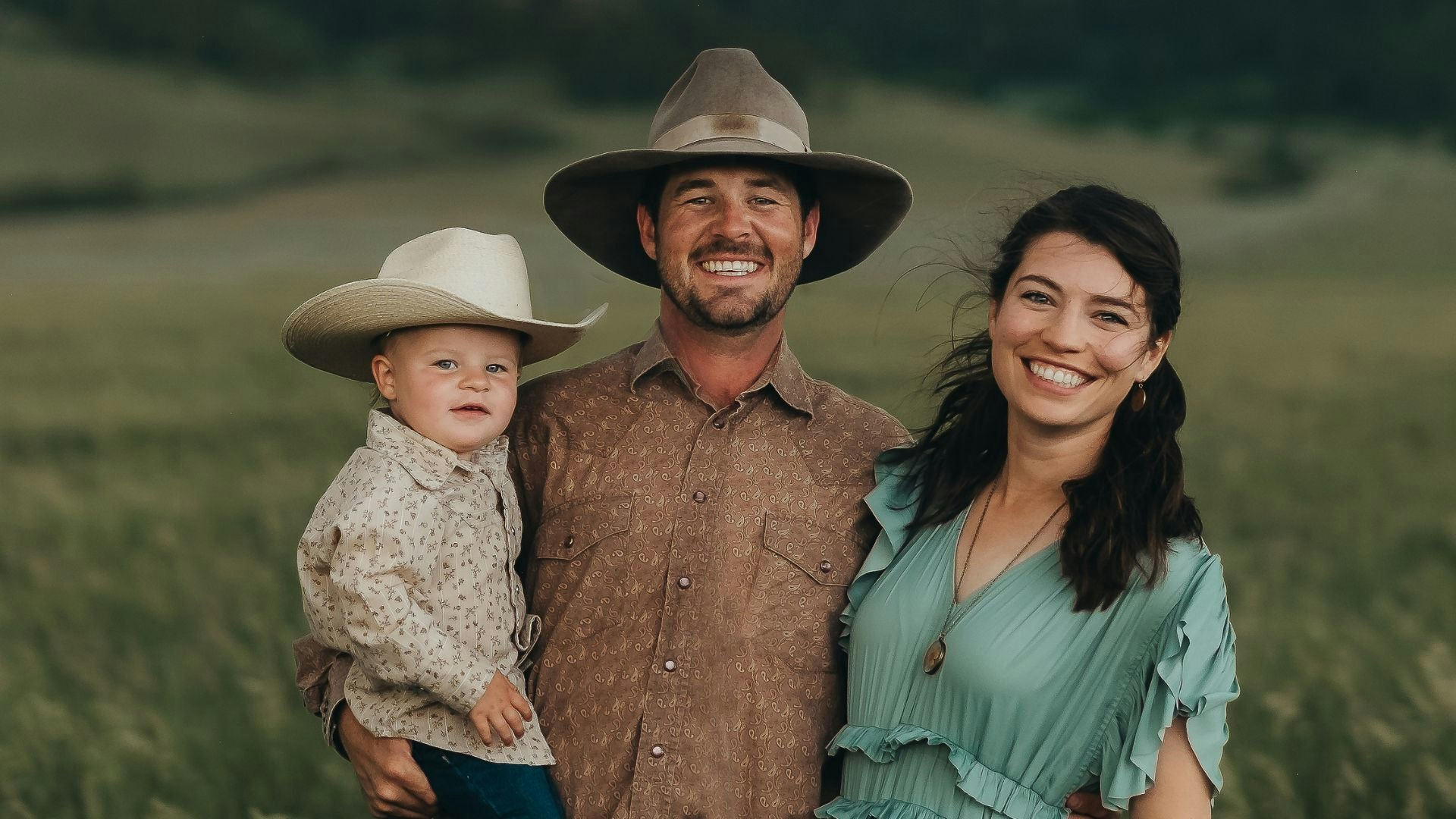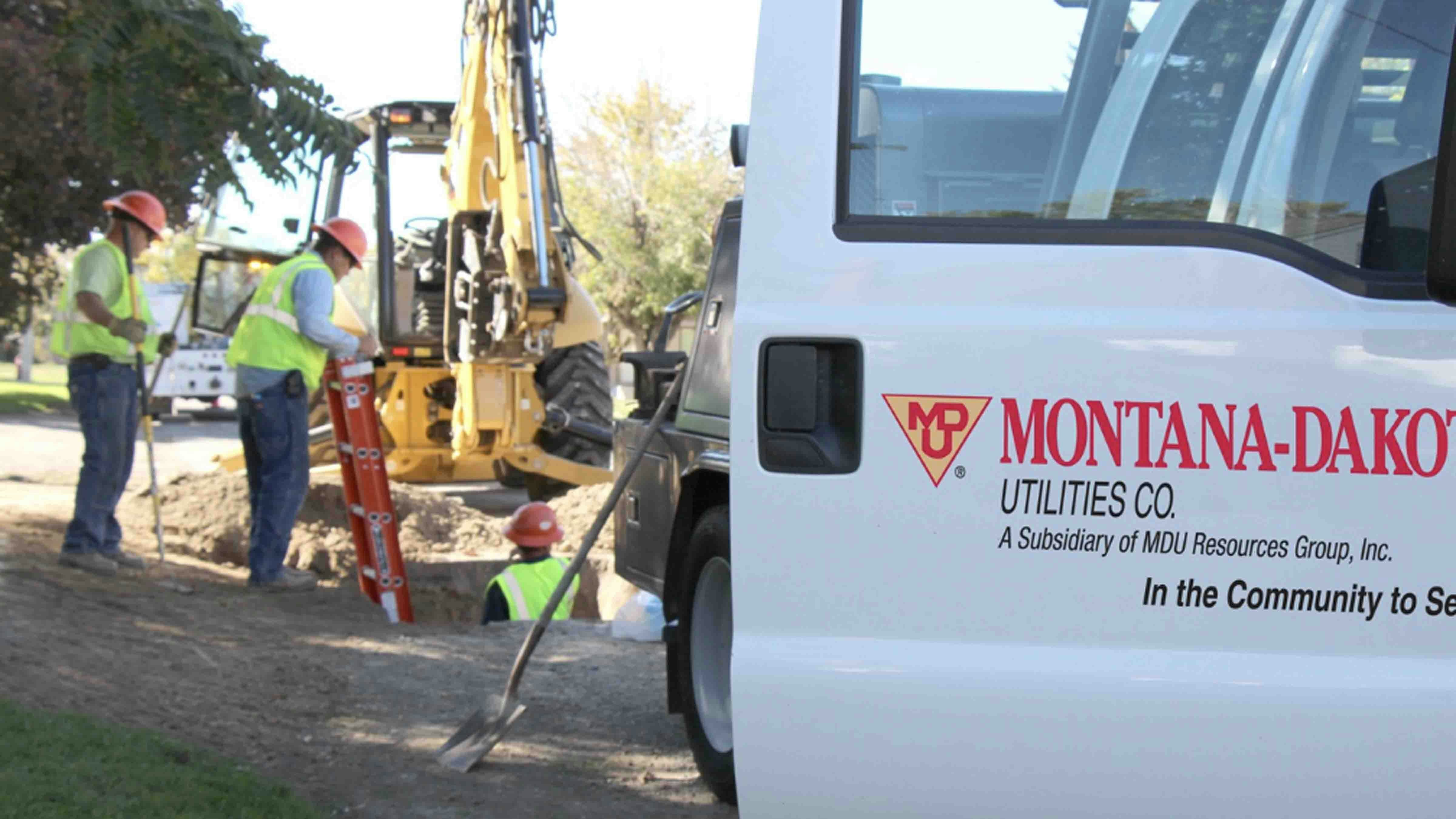Cathryn Kerns is not living the ranching life she thought she would be when she married her husband Taylor six years ago.
In 2016, the couple thought they’d be raising their family on the Kerns ranch near Sheridan, the sixth generation to work that piece of land and herd beef cattle.
But that dream never fully materialized. Instead, Taylor, Cathryn and other members of the Kerns family have had to shift gears to survive.
They first branched out into dude ranching and tourism-oriented cattle drives, and the Kerns now operate one of just three USDA-certified meat processing plants in Wyoming.
The Double Rafter Ranch
Located near Ranchester, the Double Rafter Ranch was established before Wyoming was even a state. The family legacy was passed down for four generations before economic conditions caught up with Taylor’s father, Dana, and his brothers, who 30 years ago made the difficult decision to sell off large segments of land, Cathryn said.
“Between ranches breaking up through the generations and always having to provide for three families instead of just one, but what really did it was those years with those 18% interest rates,” she told Cowboy State Daily. “It killed the family business. And in one generation we went down from about 15,000 acres to about 1,000.”

‘Real-Deal’ Experience
Cathryn said Dana and his brothers realized they had to do more than just sell off land – they needed to change their business model. So they came up with the Double Rafter Cattle Drives, an intense, immersive “real-deal” experience in which tourists from around the world herd cattle from one pasture to another.
“We move the cattle about 30 to 50 miles, just the way that we have been doing for 130 years,” said Cathryn. “It’s kept our family ranch alive to provide for generation six, and now our (2-year-old) son is the second youngest of generation seven.”
Truly Beef
Opening the family’s ranching operation to tourists was just one of the initiatives the Kerns family employed to keep the Double Rafter Ranch alive. In 2017, Cathryn and Taylor launched “Truly Beef,” a farm-to-table operation in which the pair sold their beef to guests on cattle drives.
However, they soon realized that from an economic standpoint, the costs of processing was not sustainable, and in June 2020, the Kerns found out that the processor they had to drive three hours to use was going out of business.
“The closest processor to us retired, and the new owners had their own business, and so they had to cancel everybody on the books,” said Cathryn. “Which left a whole bunch of us farm-to-table producers kind of scratching our heads and wondering what do we do now?”

Western Heritage Meats
The answer, it seemed, was to diversify the ranch even further.
Last year, with the help of investors, the Kerns launched Western Heritage Meats, which became the third USDA-certified meat processing plant in the state of Wyoming. The plant serves hundreds of small operation ranchers and livestock growers from around the region, processing beef, pork, lamb and even yak.
“Our meat processing customers are farm-to-table people looking for a USDA-inspected meat processing plant that will allow them to sell their own products,” said Cathryn. “So all of our customers are selling their own products to grocery stores, restaurants, customers nationwide.”
In addition to the peace of mind that comes with knowing their meat is processed to the highest levels of safety and health standards, Cathryn said there are other benefits for customers.
“We actually have kind of a DIY shipping station with a room that’s cold, it’s clean and people can lay out their beef on the table, put little bundles together – and we have all of the shipping supplies they need in that room,” she said. “That is a free service for all of our Western Heritage customers.”
But what Cathryn calls the “coolest” part of the DIY shipping operation is the discounted shipping rates the operation negotiated on behalf of customers.
“It was costing $400 to ship 20 pounds of meat to California, which was one of the cheaper places to ship and from,” she said. “We have been able to get those prices down to $100, which allows our customers to actually maybe build some of that price into their business model. So it opens up a lot of doors for a lot of people.”
Every Percentage Point Matters
The “Big Four” meat packing plants (Tyson Foods, JBS, Cargill and Marfrig) do more than 80% of the processing in the United States, Taylor said.
“Because they have an oligopoly in the market, they can pretty much set the price,” he said.
And because there are thousands of small ranching operations in the United States, ranchers are often forced to take whatever price is being offered.
“It is so extreme that the 2017 Wyoming census showed that Wyoming ranchers operate on a 2% margin,” said Taylor.
“In 2017, if you look at what the market was about that point in time, say a 5 1/2-weight calf would have brought you around $800,” Cathryn explained. “So 2% would be $16. How many cows do you need to keep your electric bill on?”
Strength In Numbers
Which is why the Kerns chose to go through the rigorous hoops required to set up a USDA-certified meat processing plant in Sheridan County to benefit more than just the family operation. Their mission became helping other small ranches to survive.
“Since 1980, 40% of the family ranches have gone out of business,” said Taylor. “And so, for there to be any sort of long-term sustainability in agriculture, the power needs to go back to the rancher to be able to actually make a living.”
Cathryn said that from her experience, she has learned that small ranching operations cannot make it in the industry without an outside source of income. And for a lot of family ranchers, selling farm to table is that outside source of income.
“The ranch did not pay for itself,” she said. “We could not make our land payment off of cows alone. We had to diversify to survive – and we diversified with the cattle drives, with Truly Beef and with Western Heritage Meat Co.”
Miracles
Cathryn said she also believes divine intervention played a role in saving the family ranch.
“We had a couple of cattle drive guests in August of 2019, the year before we started this company, who asked if they could pray for us,” she said. “And in that prayer, they said that the Lord wanted to say that you’re going to be leaving the family ranch for a time, and that your family will pick up the slack while you start something else.”
With no plans to leave the land they loved, the statement seemed ludicrous. But less than a year later, their meat processor retired and the Kerns were at a crossroads – leave the ranch to start something new or witness the end of their family’s legacy.
“We were desperate for something, and it just so happened that Taylor had a draft of a business plan for a meat processing plant,” Cathryn said. “And it just so happened that a retired USDA inspector (who had become a) consultant became available, and they fell out of the sky. We had the right investors with the right heart fall out of the sky. The right property became available within the right price point that checked all of the boxes for everything that we needed.”
That “miracle” has become a blessing for not only the Kerns family, but for dozens of other small operators who are now able to use the USDA-certified facility at cost savings, allowing family ranches like theirs to continue to exist.
“It’s just a miracle that it came to be, especially under the timeline,” she continued. “I know a lot of other plants that are looking to come under USDA inspection that have been trying for years, and we did it in months. So, it just is mind-blowing to me.”





